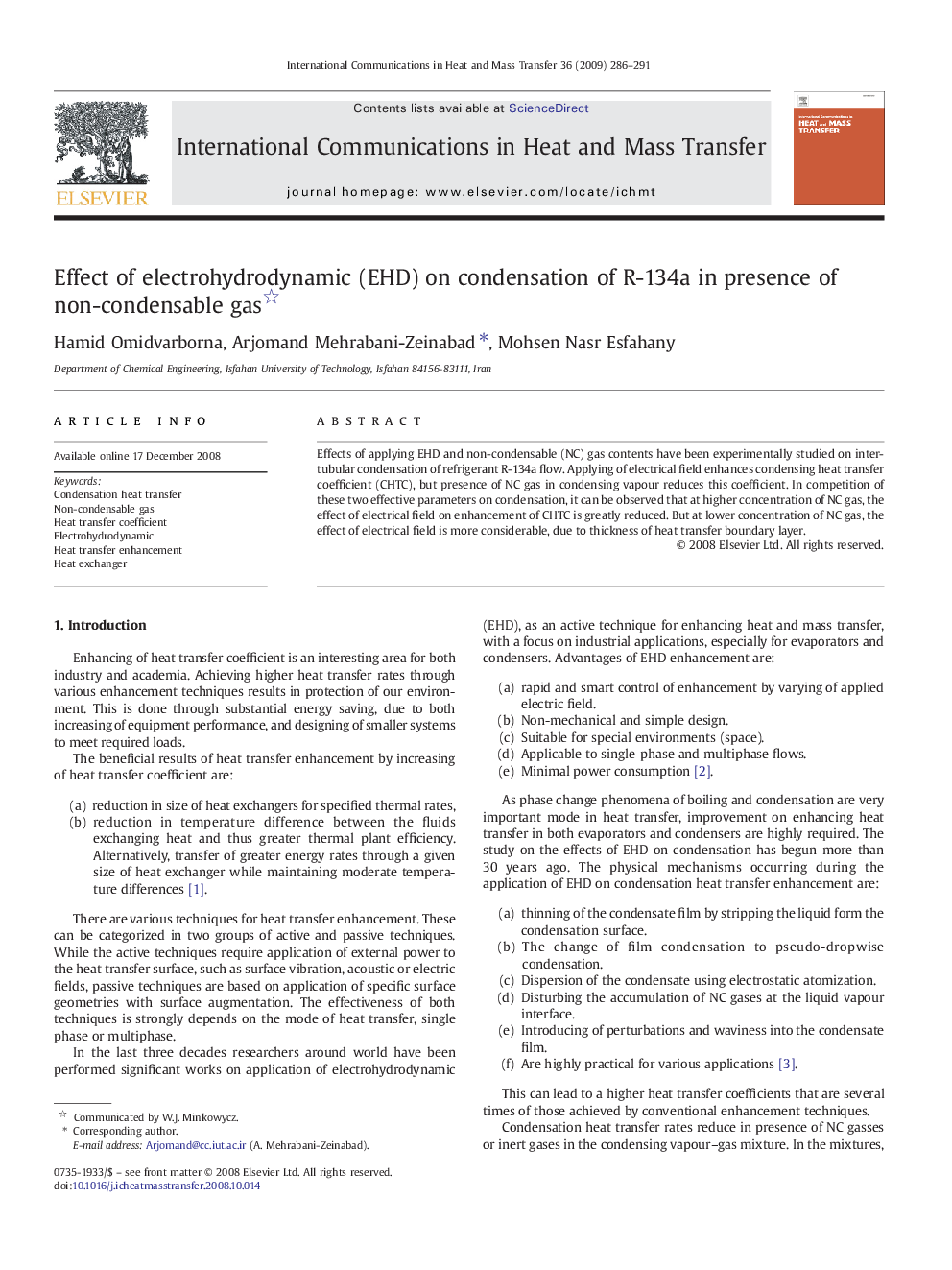| Article ID | Journal | Published Year | Pages | File Type |
|---|---|---|---|---|
| 654721 | International Communications in Heat and Mass Transfer | 2009 | 6 Pages |
Abstract
Effects of applying EHD and non-condensable (NC) gas contents have been experimentally studied on inter-tubular condensation of refrigerant R-134a flow. Applying of electrical field enhances condensing heat transfer coefficient (CHTC), but presence of NC gas in condensing vapour reduces this coefficient. In competition of these two effective parameters on condensation, it can be observed that at higher concentration of NC gas, the effect of electrical field on enhancement of CHTC is greatly reduced. But at lower concentration of NC gas, the effect of electrical field is more considerable, due to thickness of heat transfer boundary layer.
Keywords
Related Topics
Physical Sciences and Engineering
Chemical Engineering
Fluid Flow and Transfer Processes
Authors
Hamid Omidvarborna, Arjomand Mehrabani-Zeinabad, Mohsen Nasr Esfahany,
